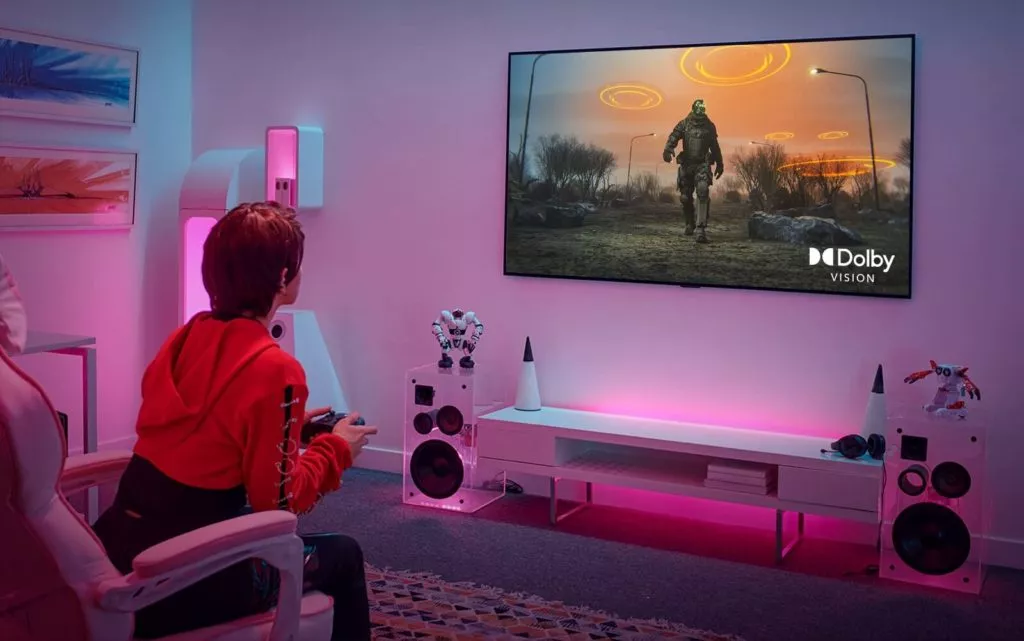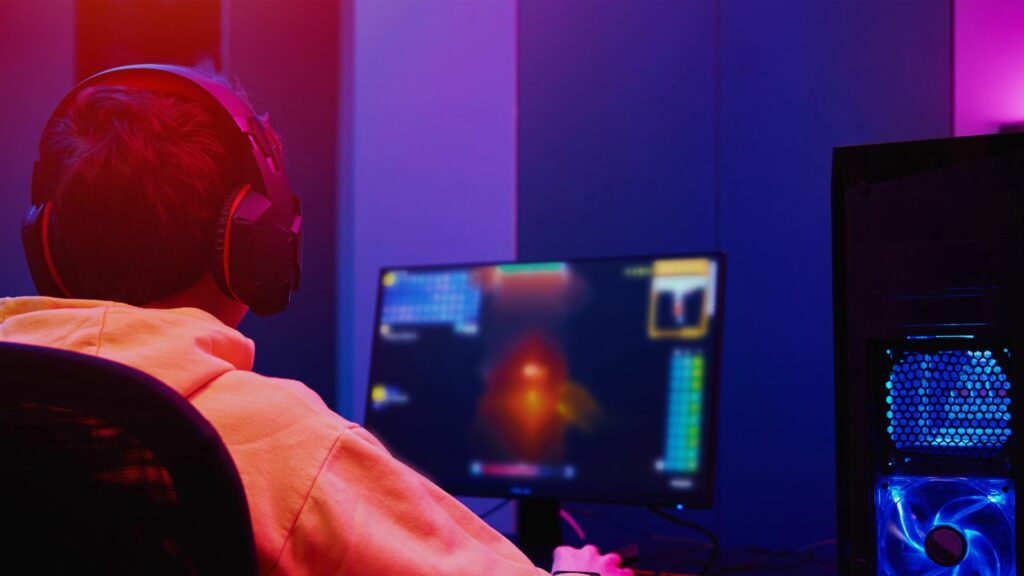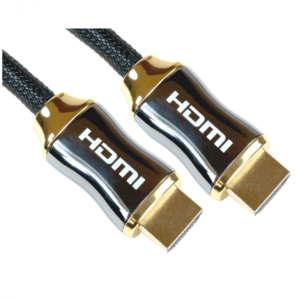We’ve come a long way from plugging in those three different coloured RCA connectors into the back of a chunky TV. High Definition Multimedia Interface (HDMI) is ‘the standard’ for digital transmission of video and audio content for home media.
We’ve broken down everything you need to know about HDMI 2.1

What is HDMI 2.1?
As the latest generation of the HDMI standard, 2.1 supports incredibly high resolutions and refresh rates. For example, HDMI 2.1 compatible devices can display 4k with up to a 120Hz refresh rate and 8k with up to 60Hz. The new 2.1 standard was announced in 2017 but only became mainstream to consumers with the launch of next-generation consoles and GPUs at the end of 2020.
HDMI 2.1 Specification
| Launch | 2017 |
| Connector Types | Type A, Type C (Mini-HDMI), Type D (Micro-HDMI) |
| Max Data Rate | 42.66 Gbit/s |
| Max Bandwidth | 1200MHz |
| Max Image Resolution | 4320p @60Hz |
| Max Refresh rate | 120Hz |
| Number of Displayable Colours | 4,400 Billion (42 Bit) |
| HDR Support | HDR 10, Dolby Vision |
In addition, to support for 120Hz at 4k, gamers benefit massively from HDMI 2.1 with native support for VRR (Variable Refresh Rate). VRR synchronises the calculated frames with the set framerate of your monitor or TV. This technology can prevent tearing and enables a smoother gaming experience. What’s more, you can enjoy these features alongside intense colour and contrasts with dynamic HDR.
What is HDMI 2.1b?
Keeping track can be a little confusing with so many different iterations and cable standards. All you really need to know is what HDMI 2.1b is capable of. This new variation supports a range of higher video resolutions and refresh rates, including 8K at 60Hz, 4K at 120Hz, and even 10K!

| Launch | 2023 |
| Connector Types | Type A, Type C (Mini-HDMI), Type D (Micro-HDMI) |
| Max Data Rate | 48Gbps |
| Max Image Resolution | 10K |
Notably, HDMI 2.1 boasts 48Gbps bandwidth alongside low electro-magnetic interference, reducing the level of noise from nearby wireless devices. There’s also baked-in support for Dynamic HDR, ensuring every moment of video is displayed at its ideal colour depth.
2.1 vs 2.0: What’s New?
Compared to its predecessor, HDMI 2.1 features a data rate of 42.6Gbit/s, which is over twice as fast as HDMI 2.0’s rate of 18 Gbit/s. This vast increase in speed is necessary to be able to drive extreme resolutions such as 8K at 60Hz. The previous version of HDMI 2.0 is only capable of 4K at 60Hz.
HDMi 2.0 Specification
| Launch | 2013 |
| Connector Types | Type A, Type C (Mini-HDMI), Type D (Micro-HDMI) |
| Max Data Rate | 18 Gbit/s |
| Max Bandwidth | 600MHz |
| Max Image Resolution | 2160p @60Hz |
| Max Refresh rate | 120Hz |
| Number of Displayable Colours | 1 billion (30 bits), deep colour (30, 36 and 48 bits) |
| HDR Support | HDR 10, Dolby Vision |

HDMI 2.1 vs DisplayPort
In modern PC gaming the primary choice is between HDMI and DisplayPort. Most GPU’s feature multiple DisplayPort and HDMI ports to choose from. However, to drive high refresh rate gaming monitors above 4k @ 120FPS you’ll need to use both a compatible monitor and a DisplayPort cable.
DisplayPort 1.4 Specification
| Max. Resolution | 7680 x 4320 |
| Refresh @ 1080p | 360Hz |
| Refresh @ Max. Res | 240Hz |
| Max. Bandwidth | 25.92Gbps |
| HDCP Version | 2.2 |
| Dynamic HDR | Y |
| Multi-Stream* | Y |
If you’re looking for a more in-depth breakdown of the differences between HDMI and DisplayPort, be sure to check out our dedicated blog guide.

Does HDMI 2.1 Make a Difference?
To summarise HDMI 2.1 supports high-resolution high refresh rate video and is ideal for the majority of gamers. Not only this but this generation of the standard is set to be future-proof and will likely support resolutions as high as 10K.

Are You Looking to Upgrade?
Are you looking to upgrade your visual fidelity with either and HDMI or DisplayPort cable? At Overclockers UK, we stock a huge selection of both cables in a wide variety of different lengths.
We’ve highlighted two of our faves, but you can explore our full collection of HDMI and DisplayPort cables by clicking the relevant buttons.
OcUK 1M Braided HDMI Cable
- 1M long
- Braided
- Support high-speed HDMI ethernet
- 4K compatible


OcUK Value 2m DisplayPort Cable
- 2M long
- Supports up to 4K and 2K resolutions
- Fully shielded cables for longevity
Find Your Interface
HDMI vs DisplayPort – Which Do You Use
Do you use HDMI or DisplayPort to connect your monitor? Which one and why? Let us know in the comments below.



